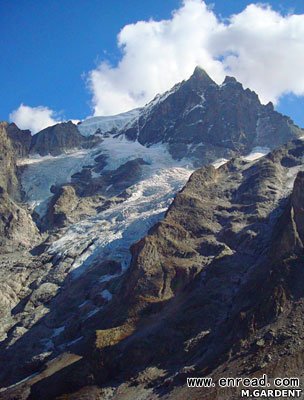法国阿尔卑斯山上的冰川正在消失
Glaciers in the French Alps have lost a quarter of their area in the past 40 years, according to new research.
一项新调查显示,在过去40年间,法国阿尔卑斯山上的冰川消失了1/4。

In the Ecrins Massif, glacial retreat is more than three times stronger than in the Mont Blanc region
By the late 2000s, this area had fallen to about 275 sq km.
The research has been presented at the American Geophysical Union (AGU) Fall Meeting, the world's largest annual gathering of Earth scientists.
It mirrors some findings of retreat occurring in other sectors of the Alps which sit across the borders of several nations, but predominantly(主要地) Switzerland, Austria, Slovenia, Germany, France, and Italy.
The new French Alps glaciers inventory was produced by Marie Gardent, from the University of Savoie, and colleagues.
It assessed the roughly 600 glaciers in broad areas incorporating the Ecrins, Belledonne, Vanoise, Ubaye and Grande Rousse Arves massifs, as well as the famous Mont Blanc Massif in the north.
The team drew upon map archives, past satellite imagery and aerial(航空的) photographs. Manual inspection was used to check the automatic delineation(描述) methods employed in the pictures was correct.
"We use manual delineation to verify the satellite data because there can be a problem with debris cover on a glacier," explained Ms Gardent.
"Automatic delineation from satellite data will sometimes say there is no glacier when in fact we know there is one there. Also, deep shadows can hide the glacier margins."
The only existing glacial inventory from the French Alps was published four decades ago within the context of the World Glacier Inventory. It found the overall area of ice to be about 375 sq km.
By 1985-86, in spite of a short advancing period in the late 70s/early 80s, glacial coverage had decreased to a value close to 340 sq km, the new survey shows.
Since then, the withdrawal has accelerated, with the area being reduced to about 275 sq km in the late 2000s.